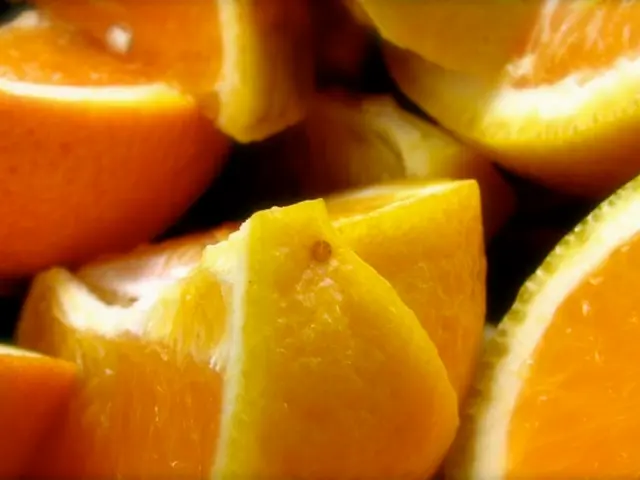Signs for Gardeners: Recognizing Ripe Strawberries for Harvesting
In the world of gardening, there's no one more knowledgeable than Larry Meyers. With over a decade of experience under his belt, he's on a mission to share his expertise and create a one-stop shop for all gardening information and needs.
Strawberries are a delightful addition to any garden, and with the right care, they can provide a bountiful harvest. Here are some key tips to help you grow the juiciest and most flavourful strawberries.
Proper Storage and Harvesting
Storing strawberries properly can greatly extend their shelf life. Move them from the garden to the refrigerator right away to maintain their freshness. Ripe strawberries are uniformly bright red, firm but not hard, and have a strong sweet scent. When picking, handle them with care to avoid bruising. Picking strawberries in the morning when they're cool can enhance their flavour.
To pick strawberries at their peak ripeness, wait until they are fully red and slightly soft to the touch. Leaving a small bit of the stem on the berry can help prolong freshness. If strawberries are too soft, they've likely over-ripened and won't taste as good.
Variety Selection
There are three main types of strawberries: June-bearing, Day-neutral, and Everbearing. June-bearing strawberries produce a single large crop typically in June. Day-neutral strawberries produce fruit throughout the growing season until the first frost. Everbearing strawberries usually produce two larger crops: one in the spring and another in late summer or fall.
The best strawberry varieties for a successful and bountiful harvest include Chandler and Camarosa for hill (high-input) planting systems, prized for their performance in warmer regions and producing large, flavourful berries. For other types, popular varieties include Sequoia (June-bearing) and Fort Laramie or Ozark Beauty (ever-bearing), which are valued for disease resistance and adaptability to different climates.
Planting and Care
Strawberries thrive in temperatures between 60-80°F (15.5-26.6°C), well-draining, slightly acidic soil, and with plenty of sunlight and regular watering. To protect strawberries from pests and wildlife, consider using netting, fences, organic pesticides, proper spacing, and straw mulch.
The plant crown must be positioned slightly above soil level with roots about ¼ inch below. Plants should be spaced about 12 inches apart in hill systems or 18-24 inches apart in rows for June-bearing types, allowing adequate airflow and reducing competition.
Consistent moisture (about 1-2 inches per week) supplied by drip irrigation or soaker hoses promotes healthy development while minimizing fungal diseases from wet leaves. Full sun exposure (6-8 hours daily) is essential for photosynthesis, fruit size, and sweetness.
Weed and Pest Control
Minimize competition from weeds and manage pests and diseases to protect plant health and maximize yield.
The choice of planting system (matted row vs. annual hill) also affects management practices and yield potential. The annual hill system with Chandler or Camarosa varieties is particularly good for commercial-style, large fruit harvests with higher inputs.
In summary, selecting well-adapted, productive varieties like Chandler and Camarosa, ensuring correct planting depth and spacing, maintaining fertile, well-drained slightly acidic soil, providing full sun and consistent moisture, and managing weeds and pests are all critical to achieving a successful and bountiful strawberry harvest.
Sources:
[1] University of California Agriculture and Natural Resources. (2021). Strawberries. https://ucanr.edu/sites/strawberries/
[2] Michigan State University Extension. (2021). Strawberries. https://www.canr.msu.edu/news/strawberry-production-guide
[3] North Carolina State University. (2021). Strawberry Production Guide. https://www.ces.ncsu.edu/depts/hort/consumer/vegetables/strawberries/
[4] Cornell University. (2021). Strawberry Production. https://nysipm.cornell.edu/factsheets/strawberries/
Maintaining a strawberry garden can significantly enhance your home-and-garden lifestyle and provide delicious produce for a longer period. When considering your strawberry variety, consider factors such as climate and crop timing, like choosing Chandler or Camarosa for warmer regions and yielding over a longer period thanks to ever-bearing types.
Proper care, including selecting the right soil, providing adequate water and sunlight, and employing methods for weed and pest control, will help ensure a bountiful yield and an enjoyable home-and-garden lifestyle. Adopting Larry Meyers' expert tips will fuel your gardening passion and help you create a thriving home-and-garden sanctuary.




